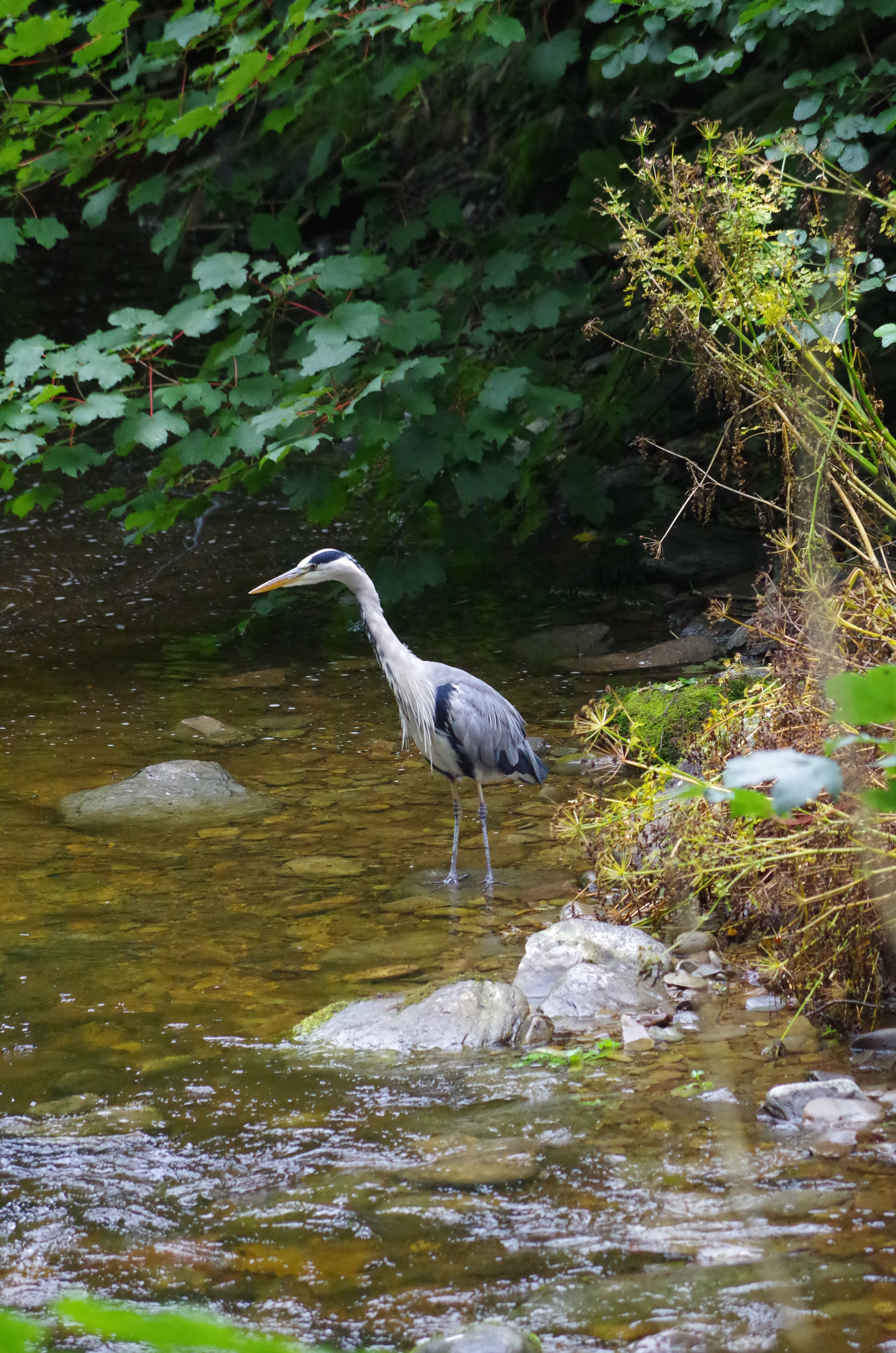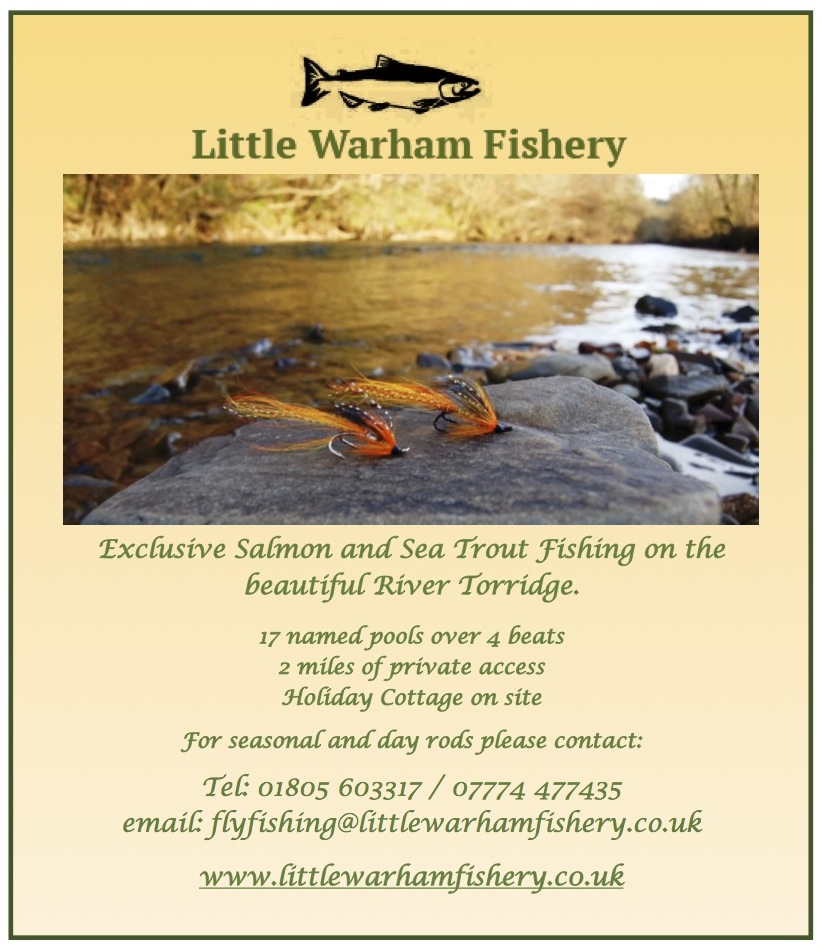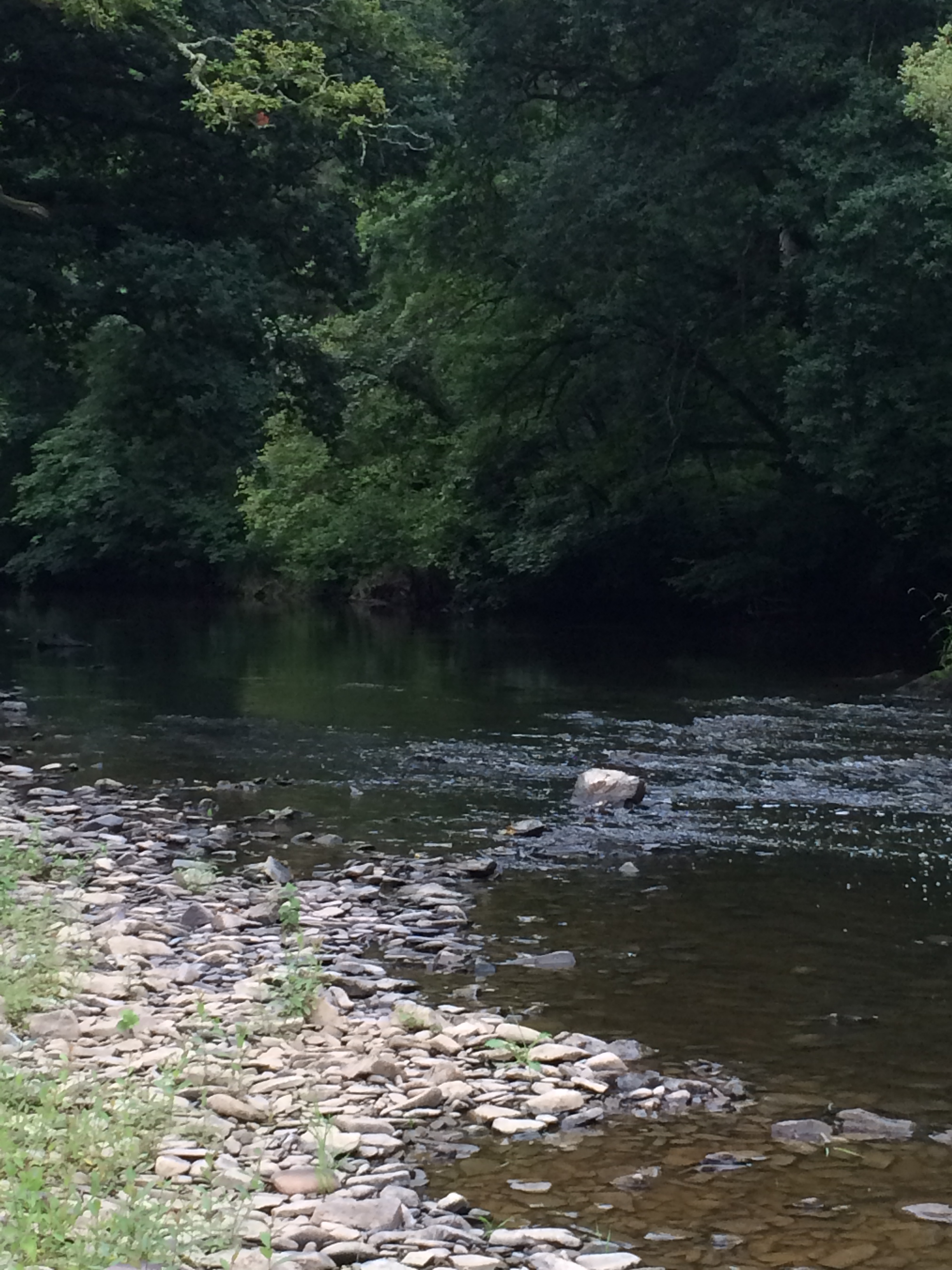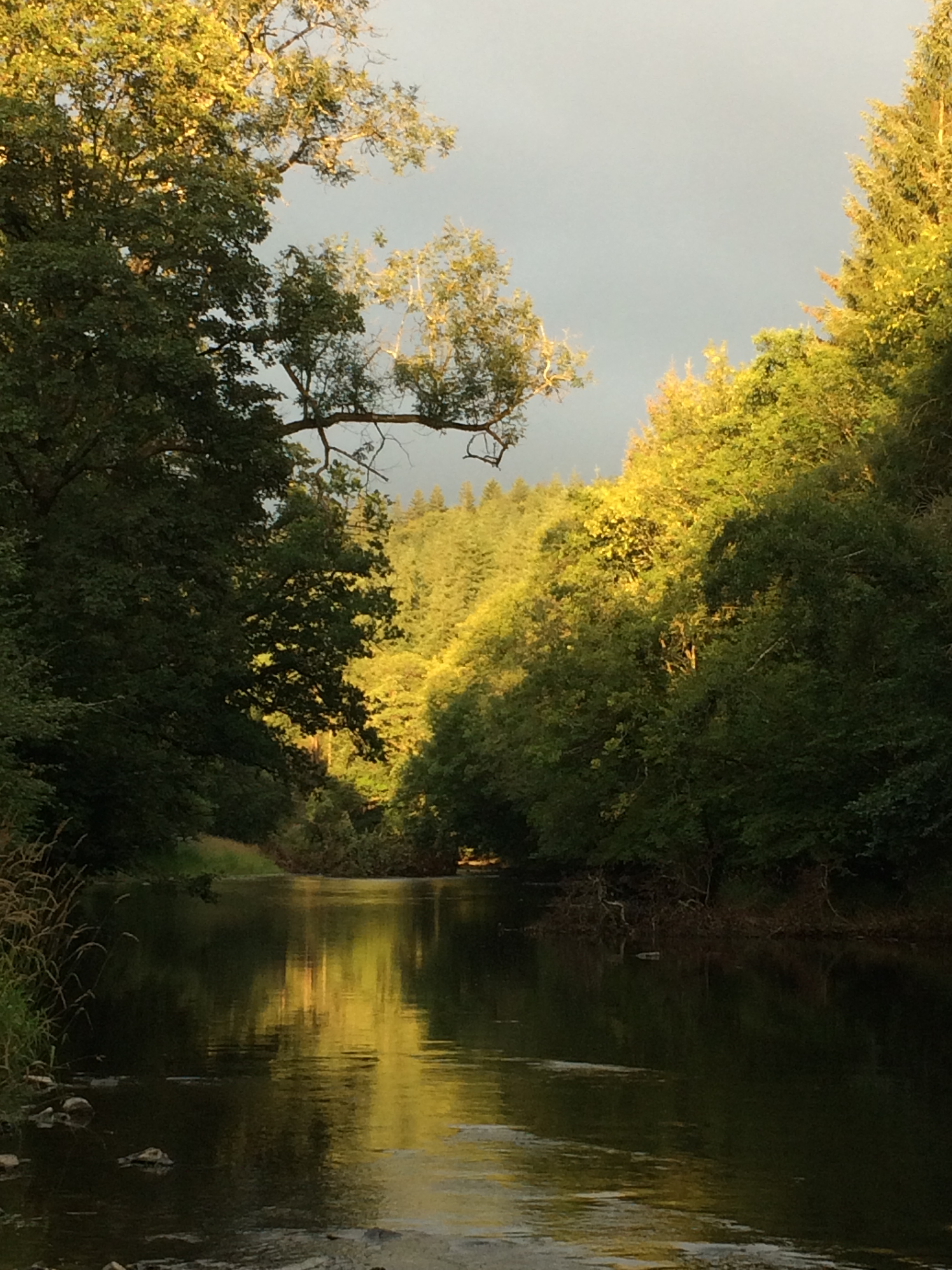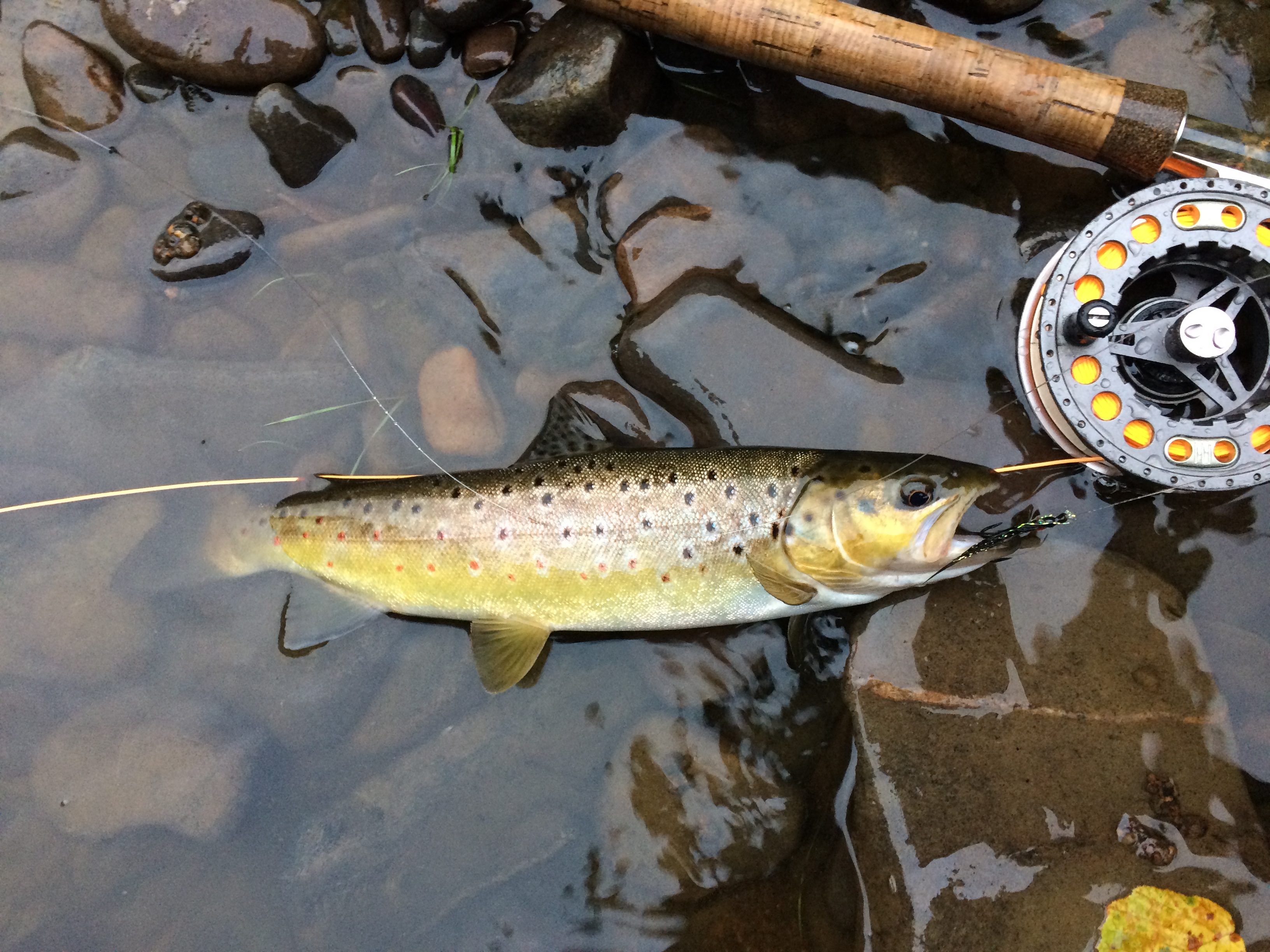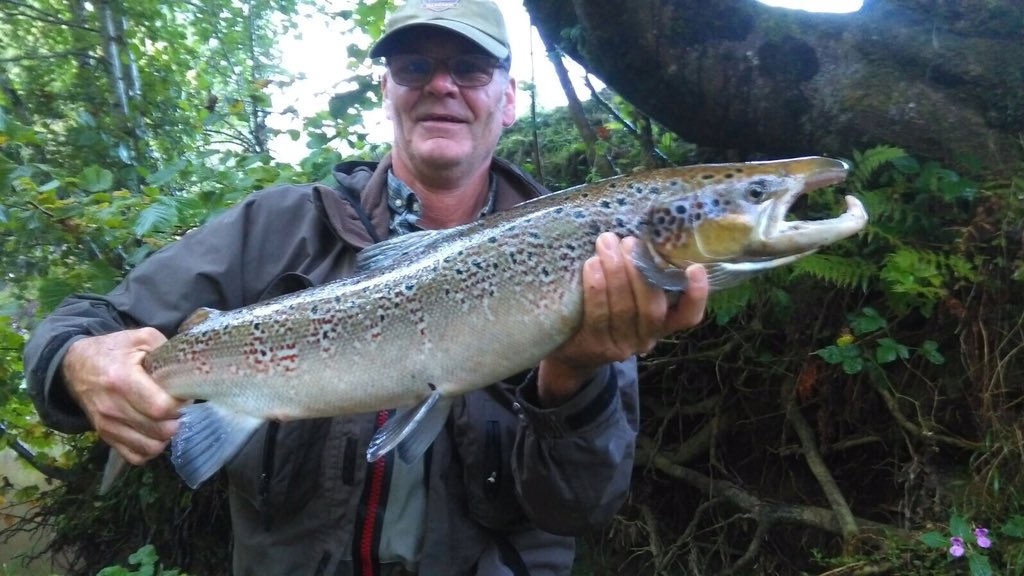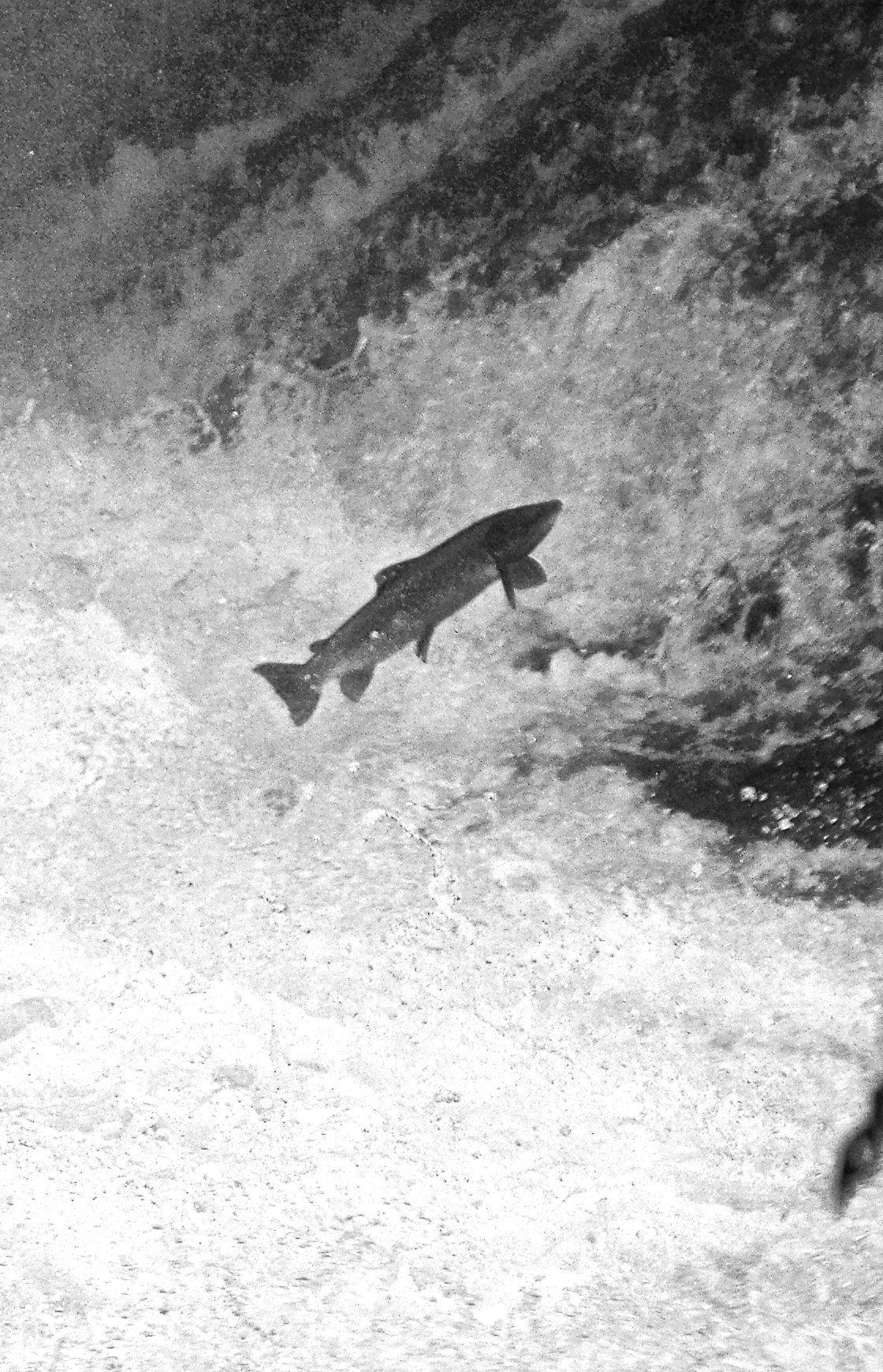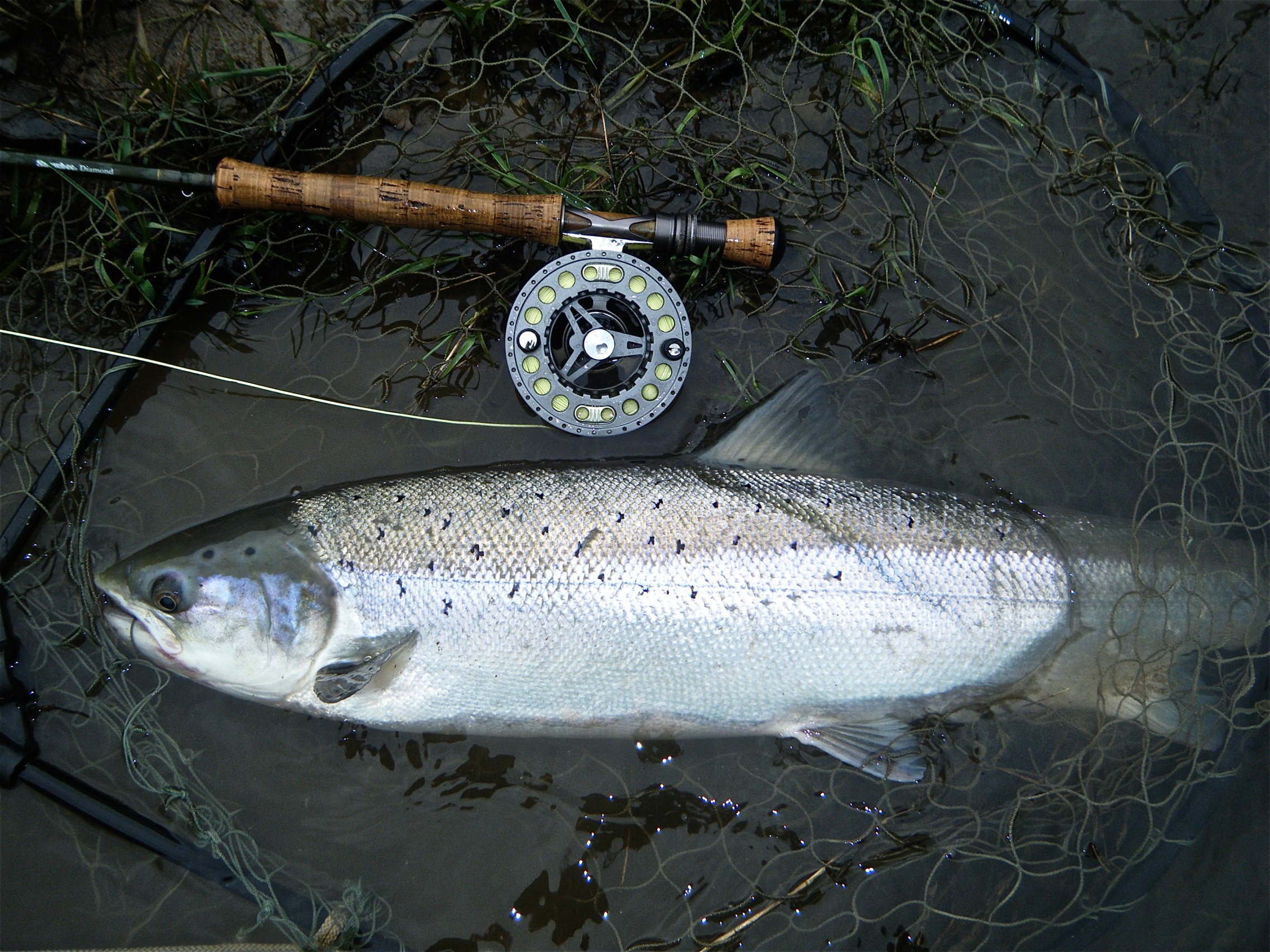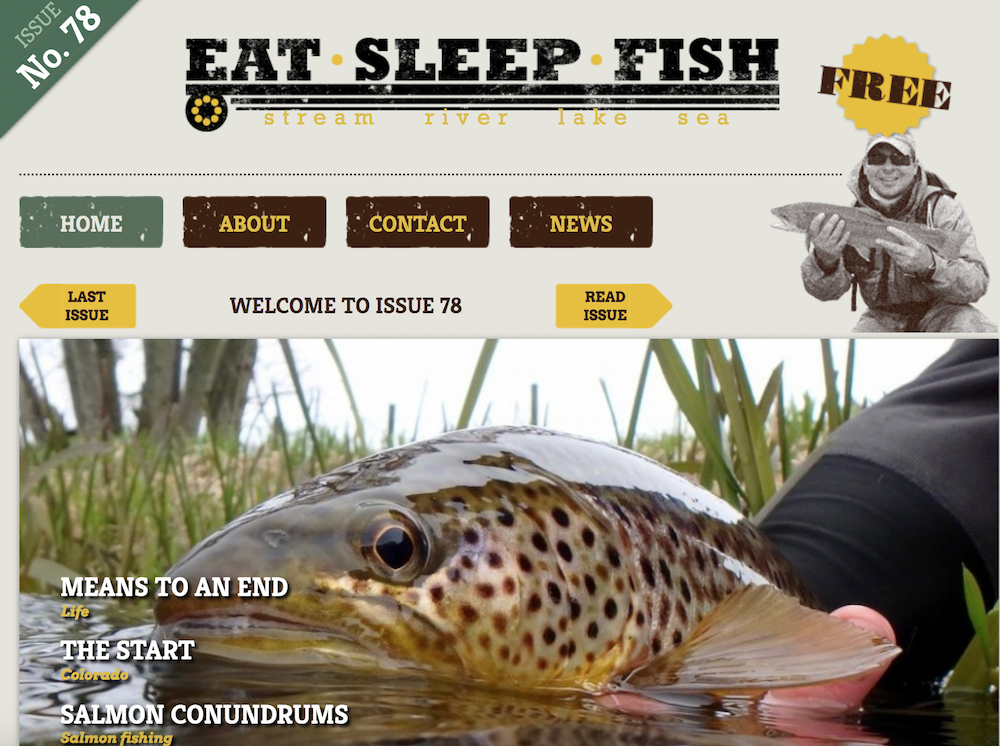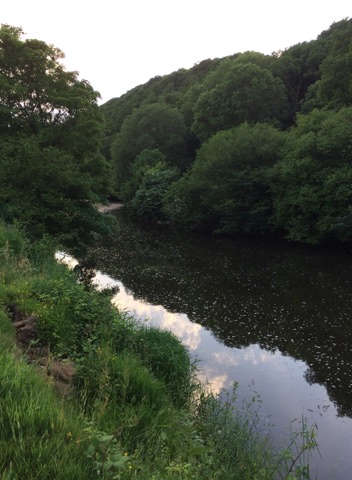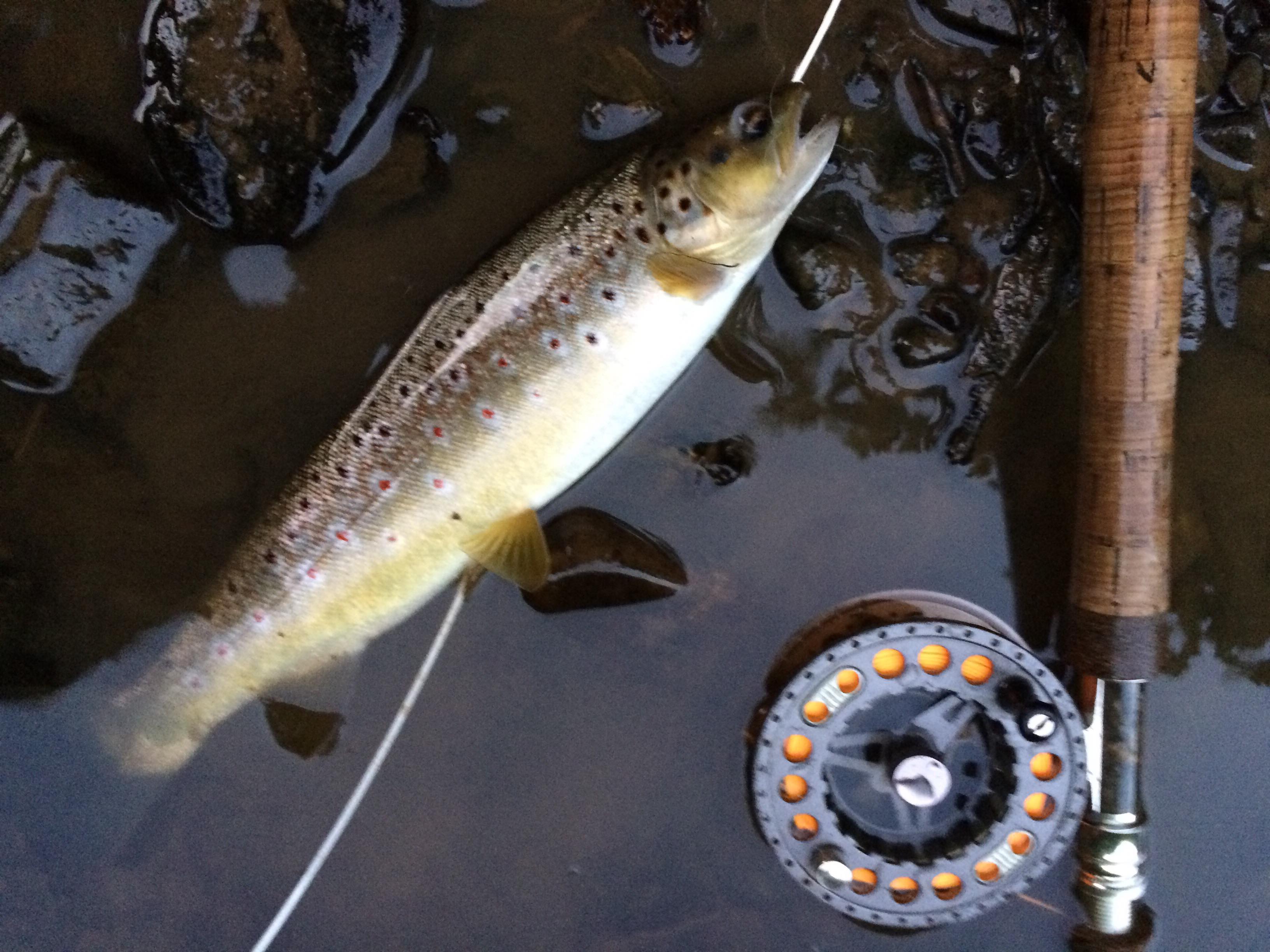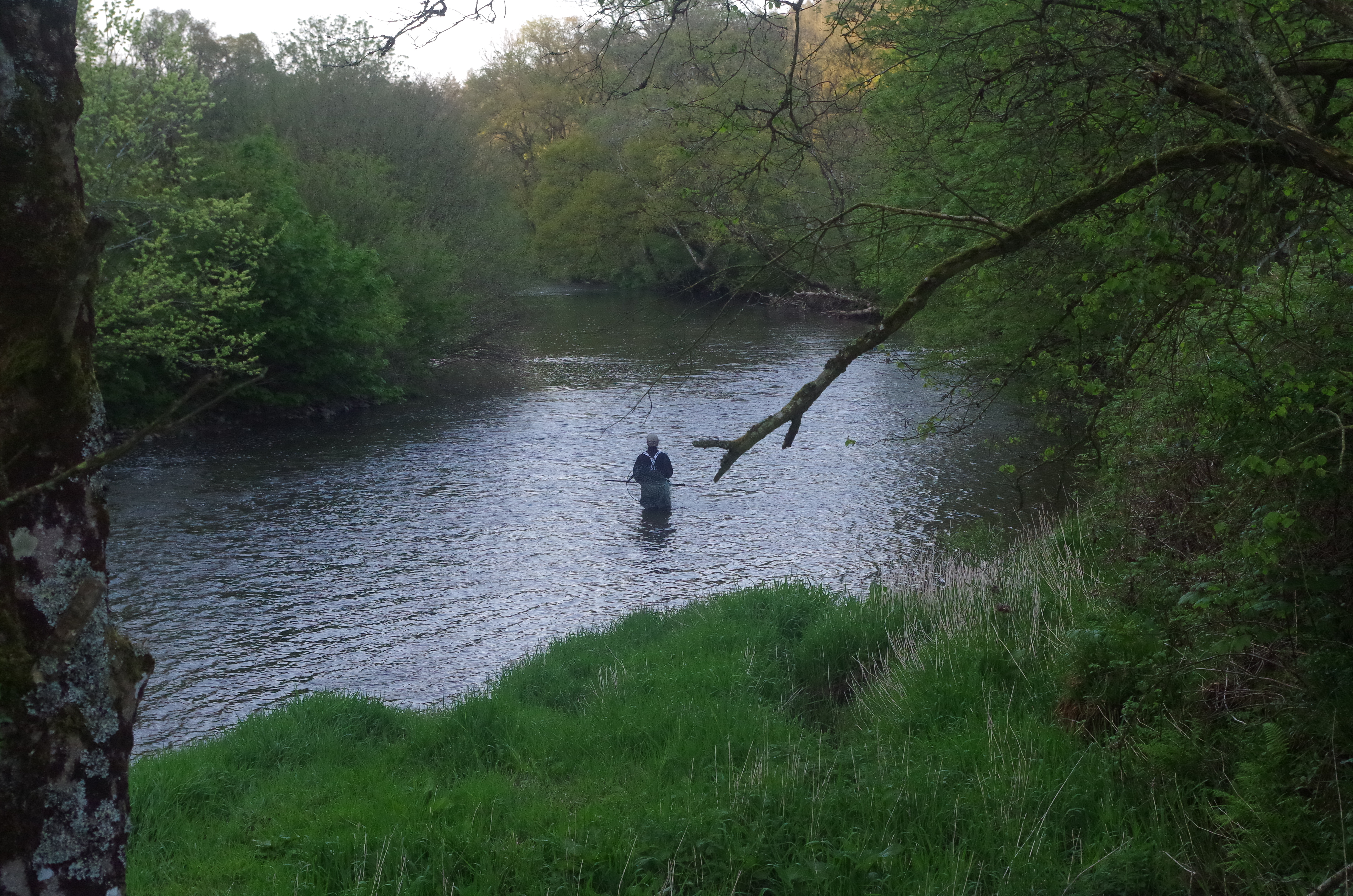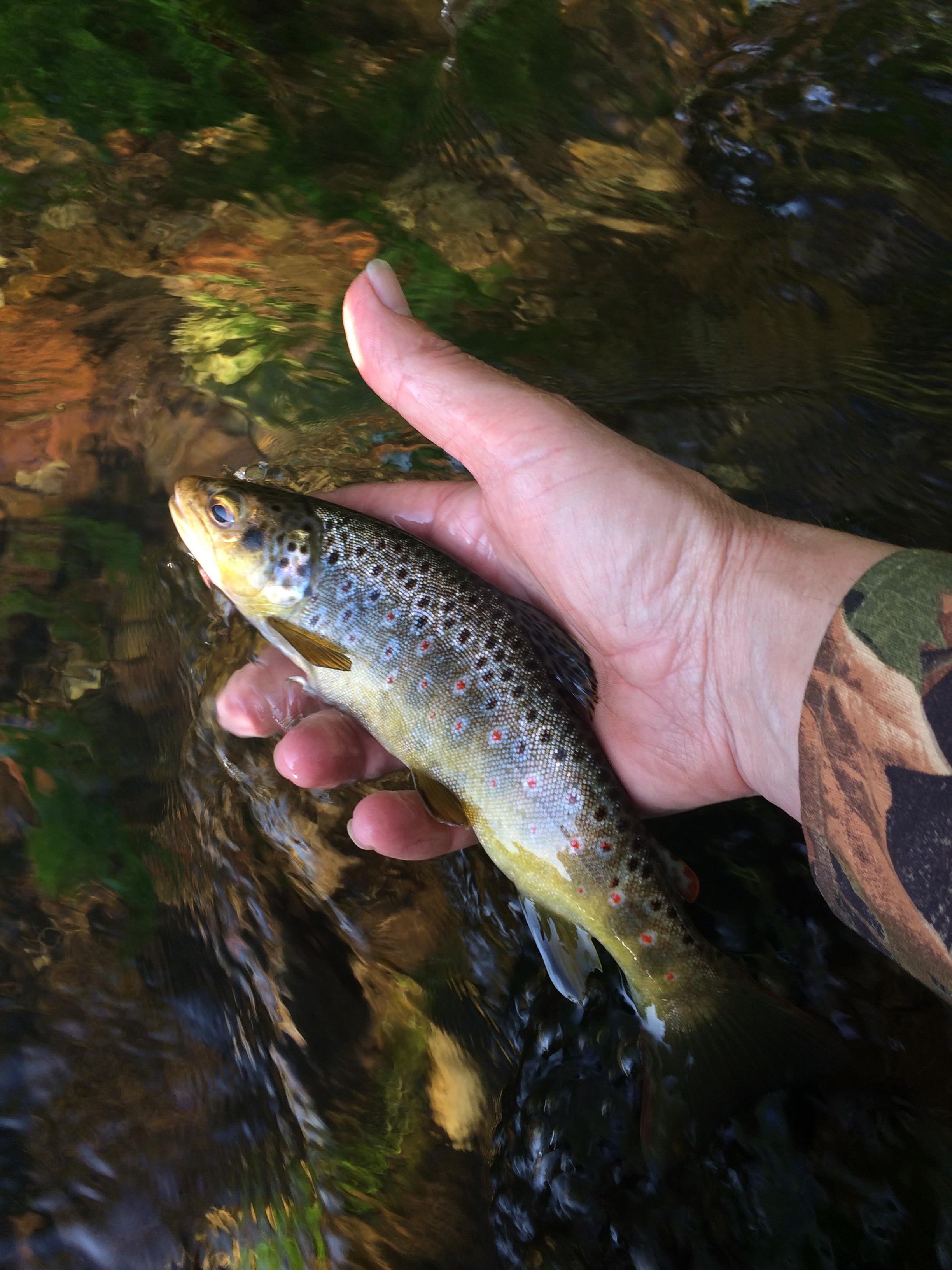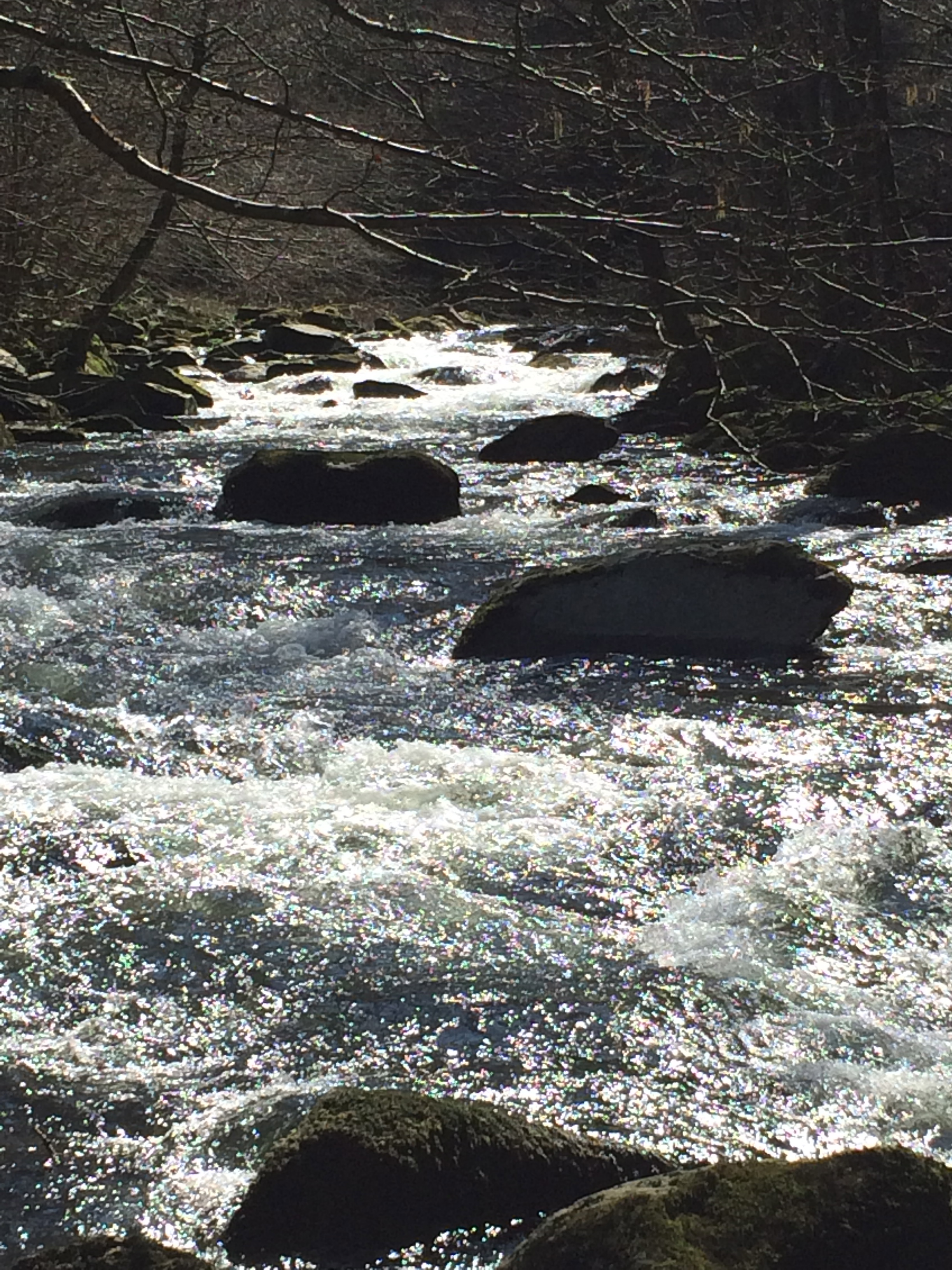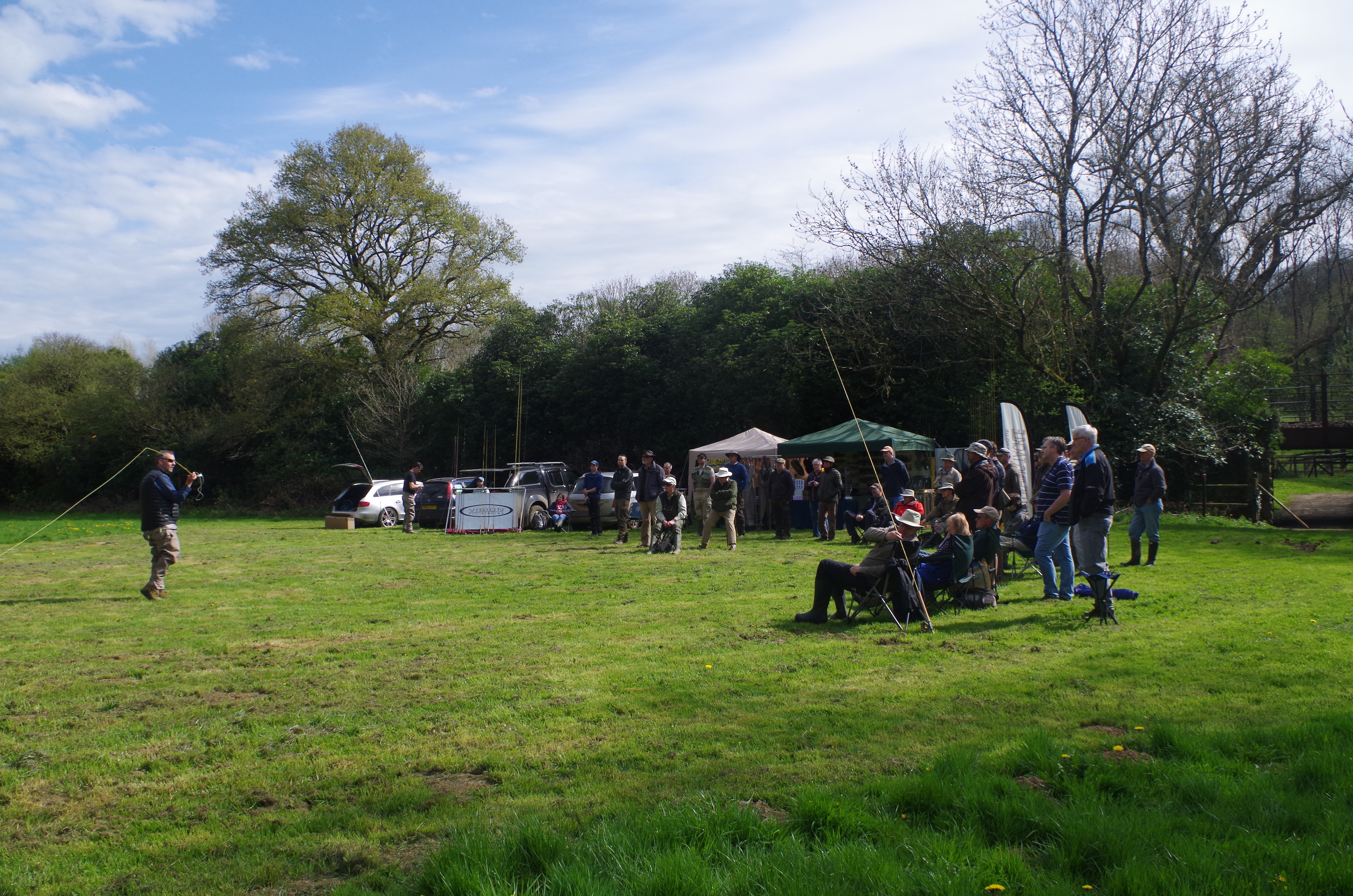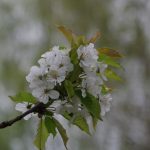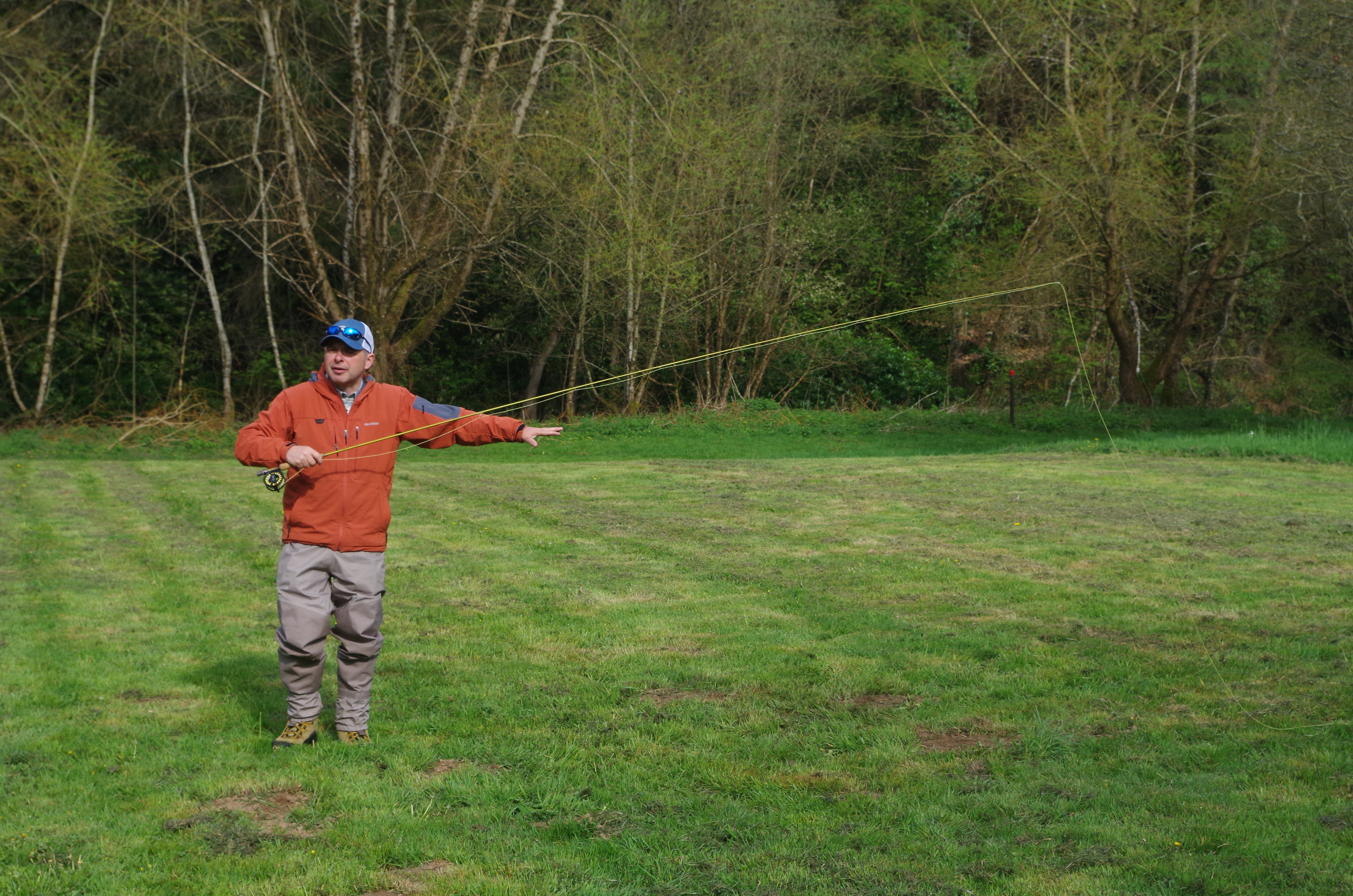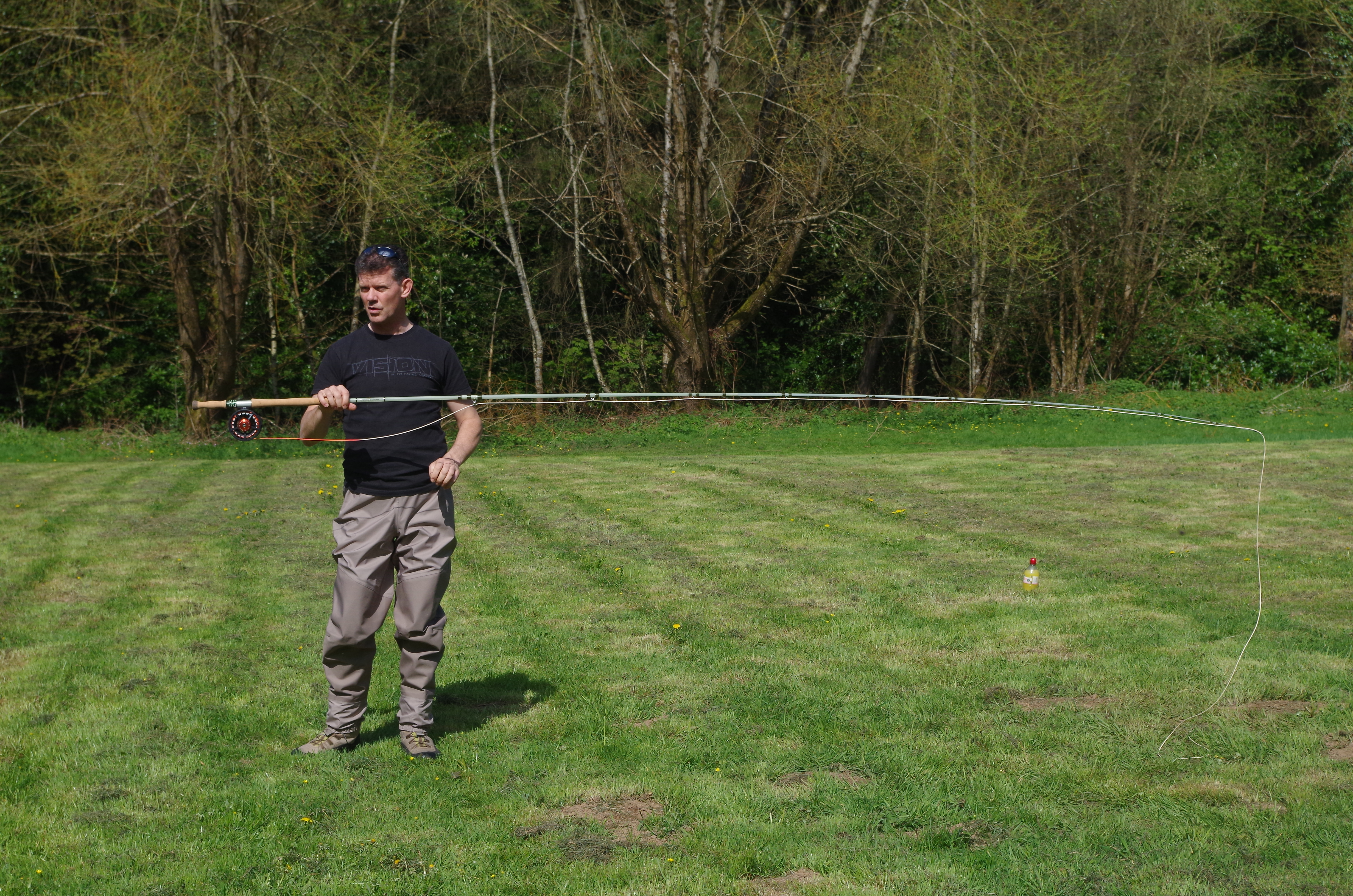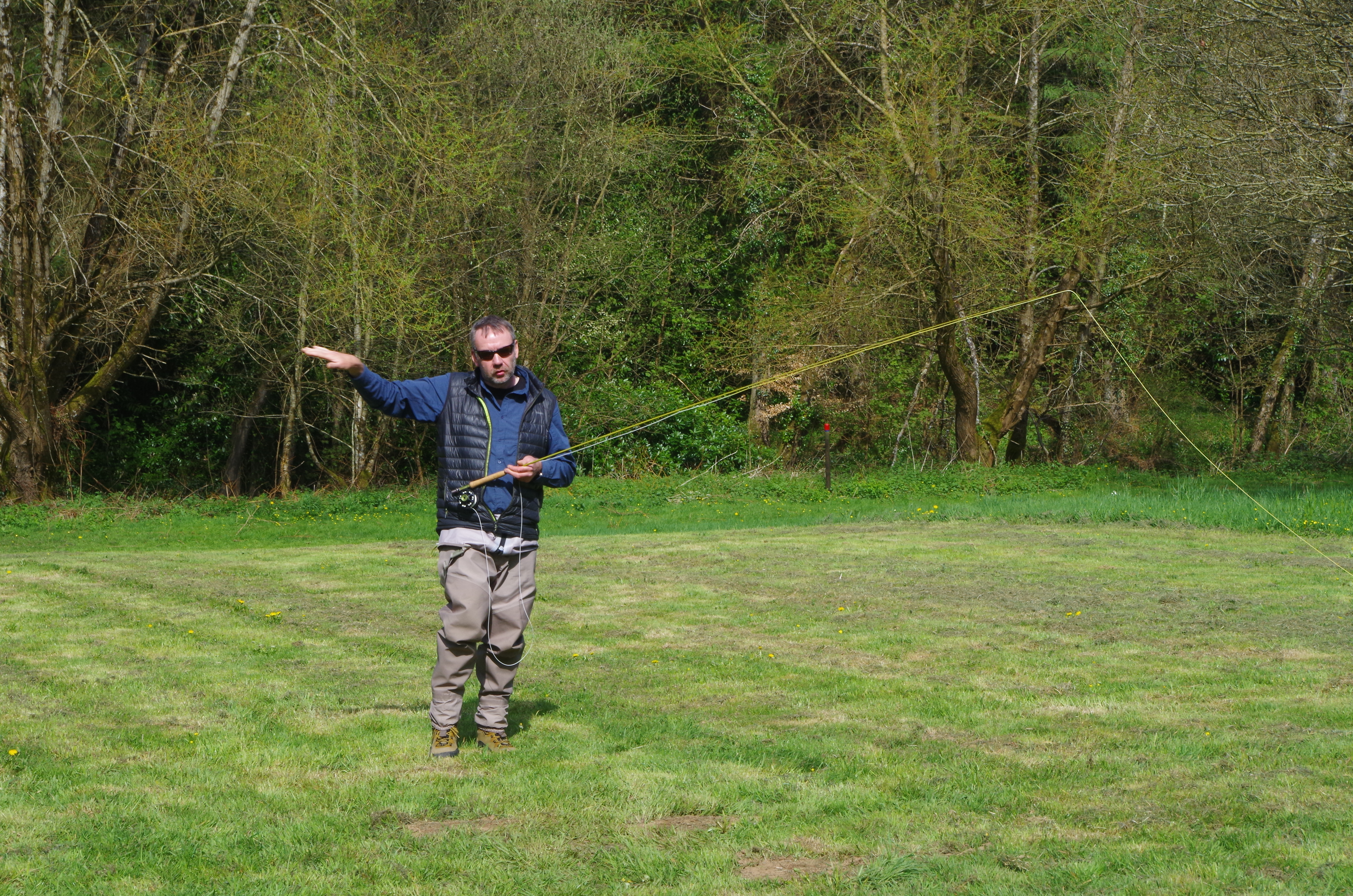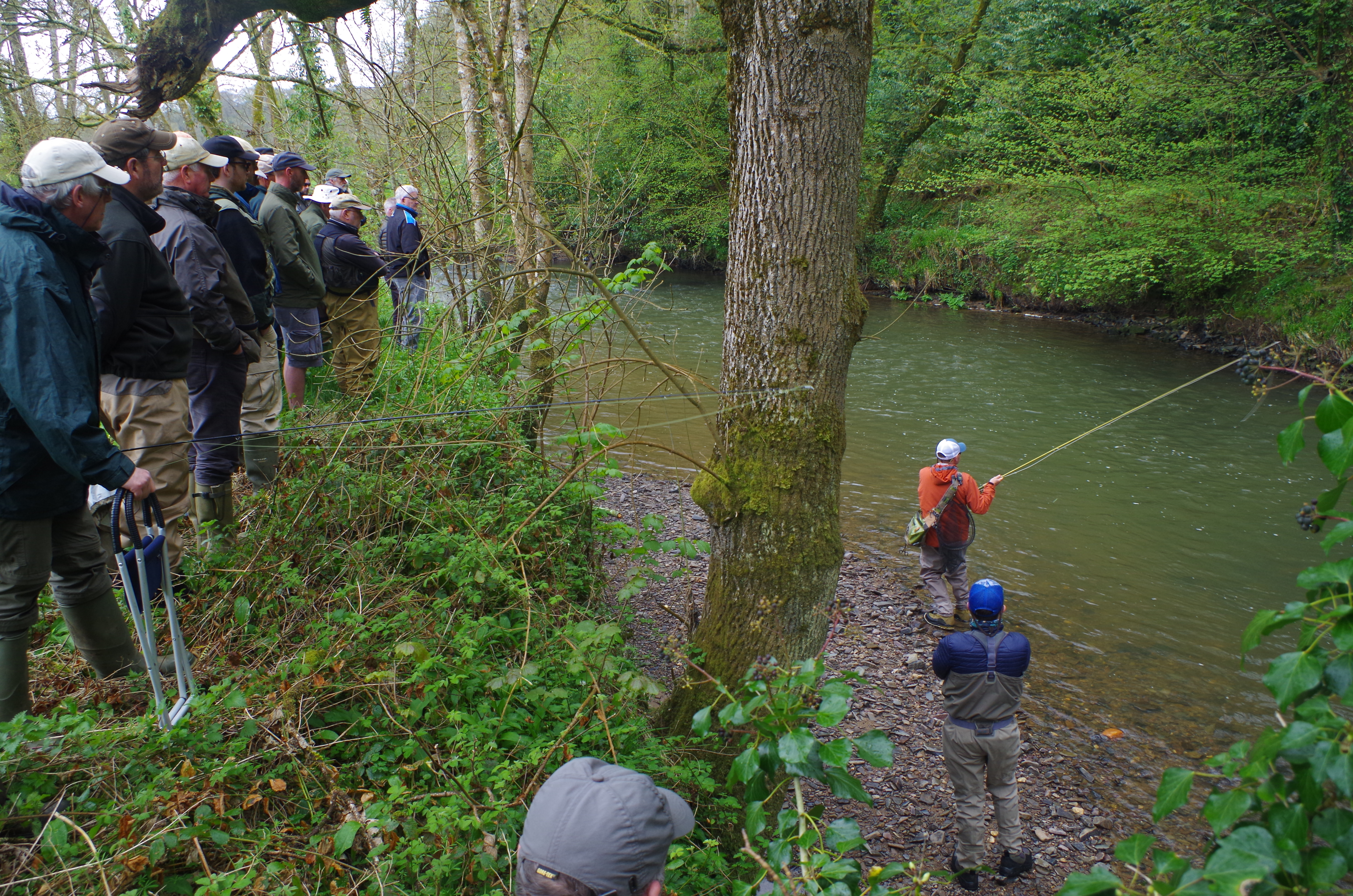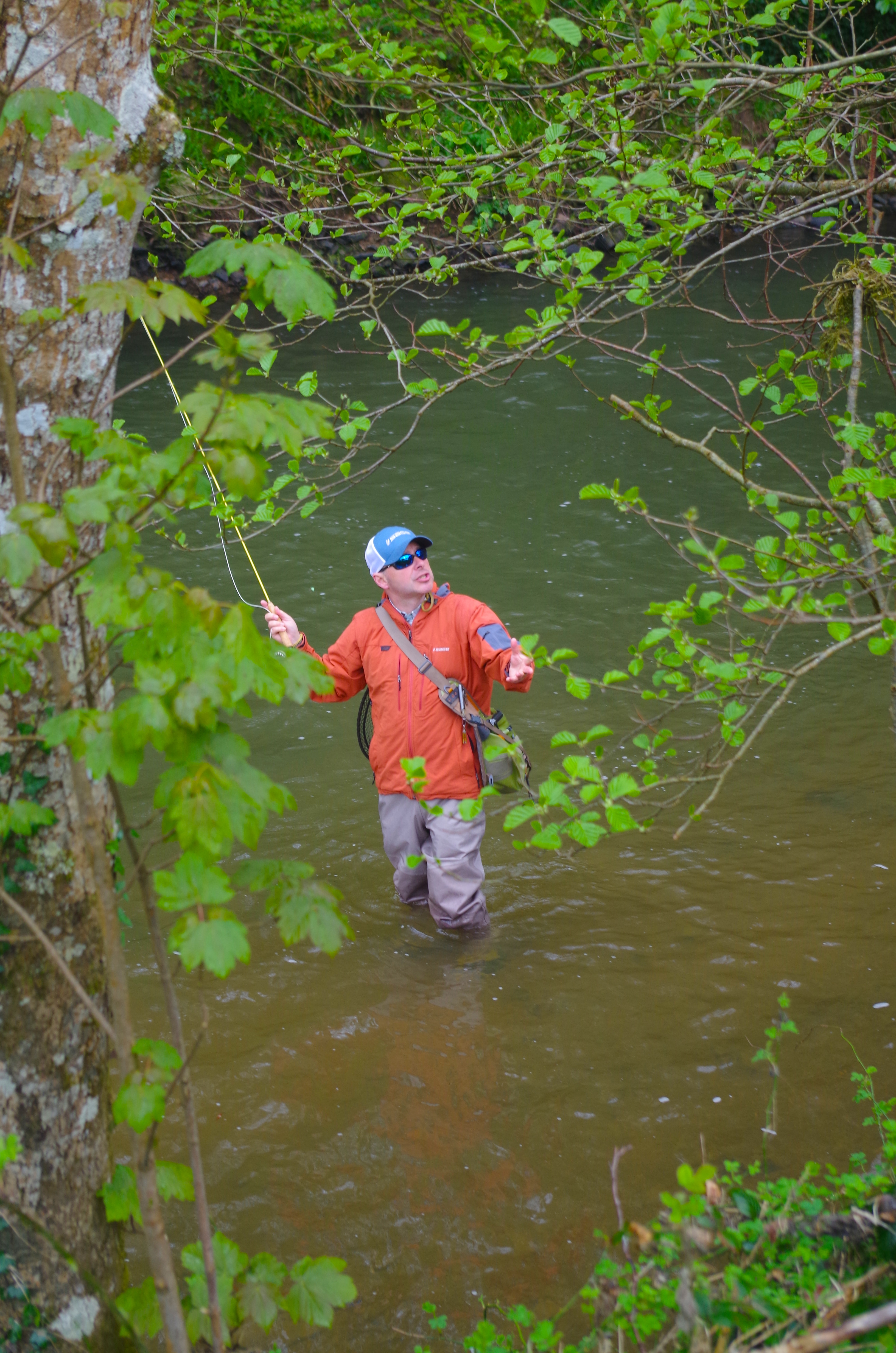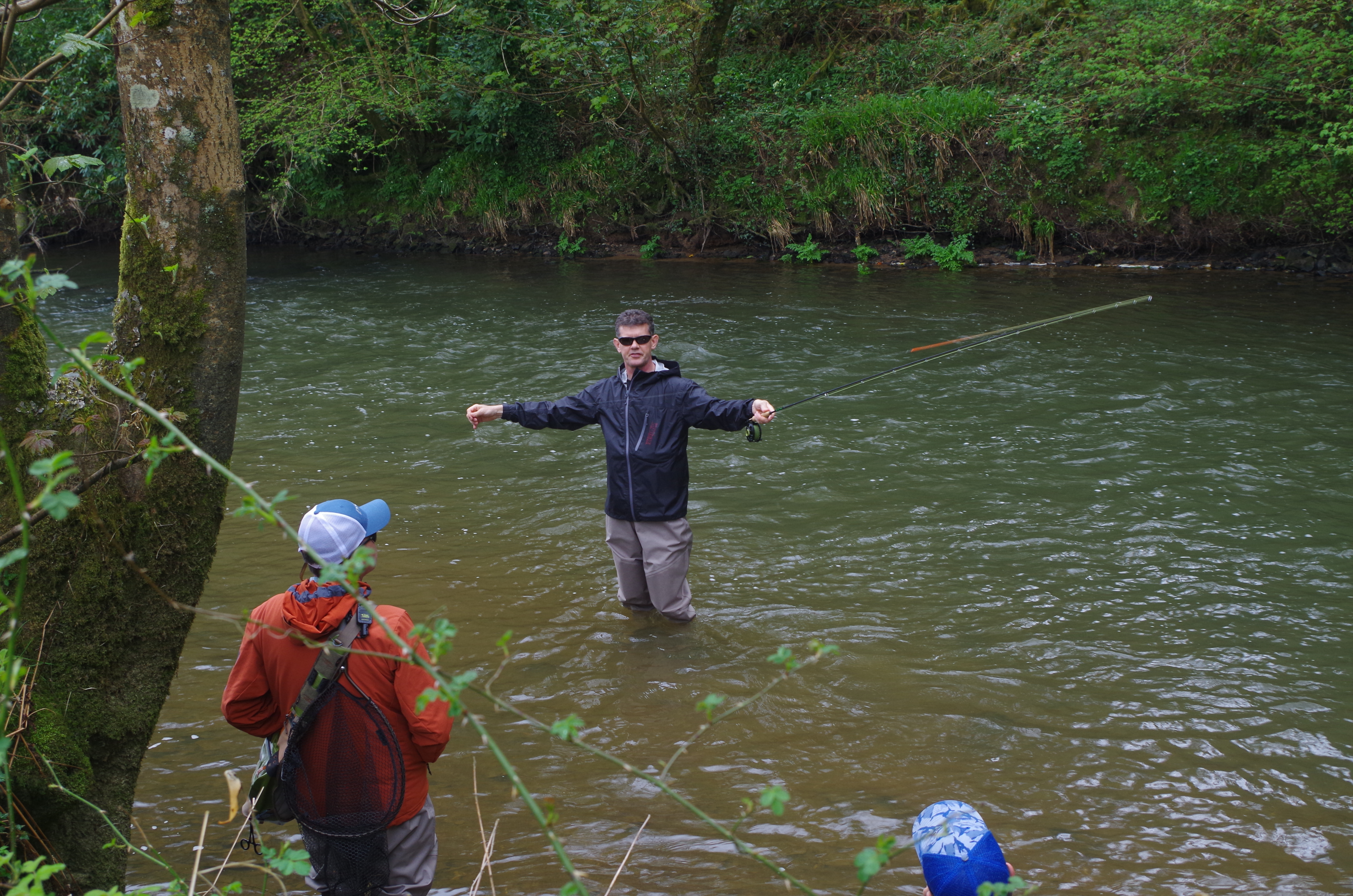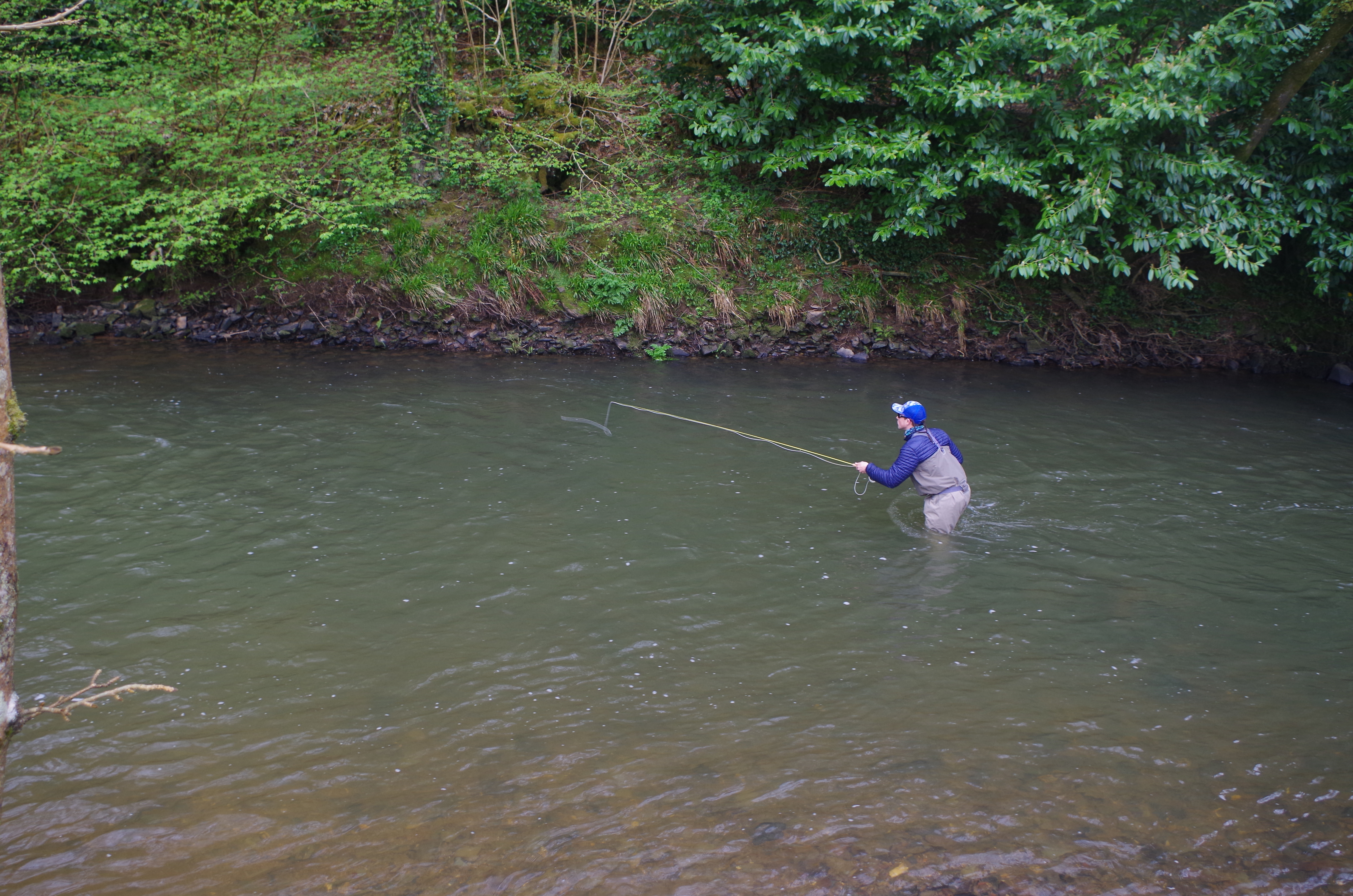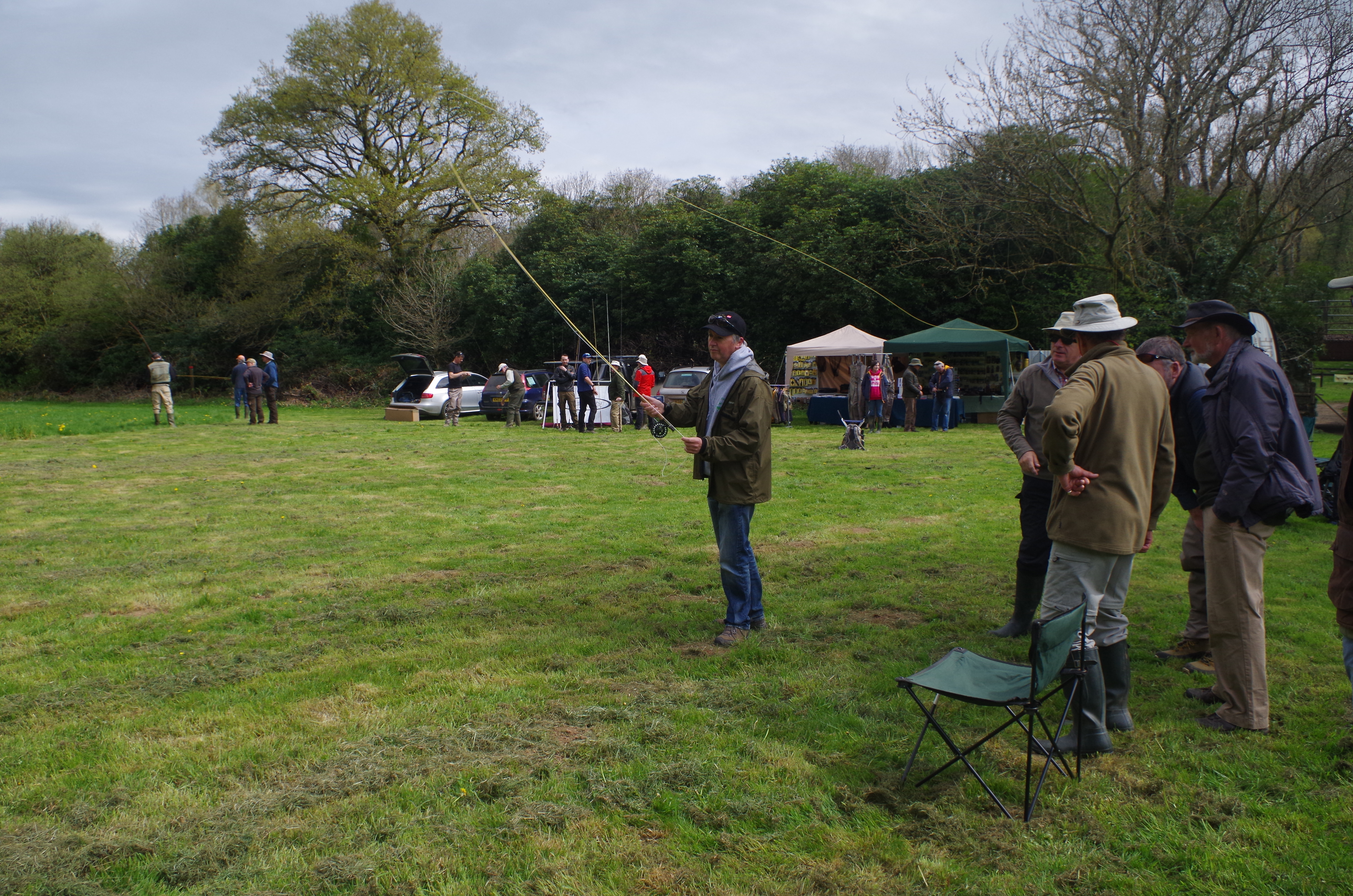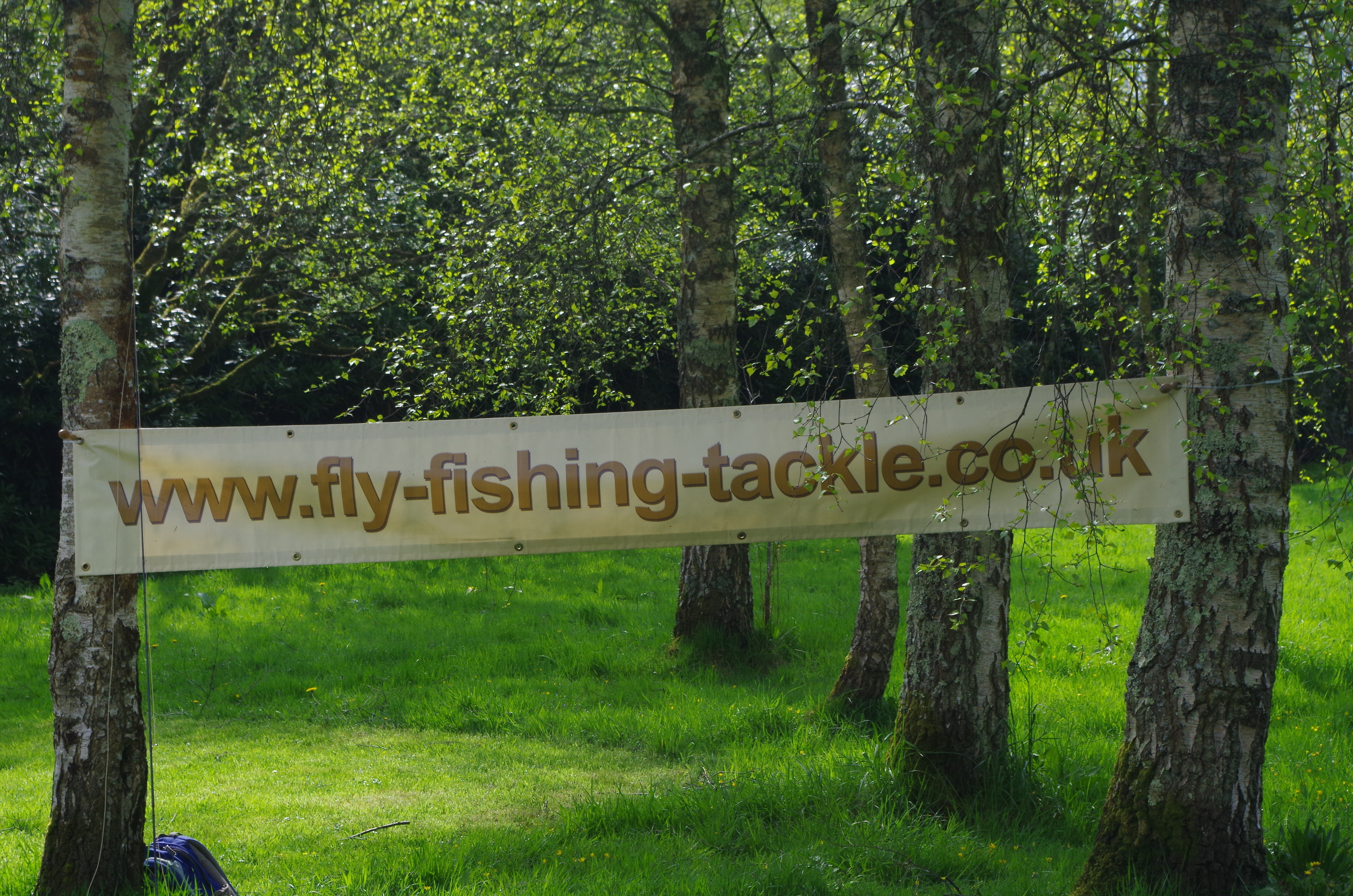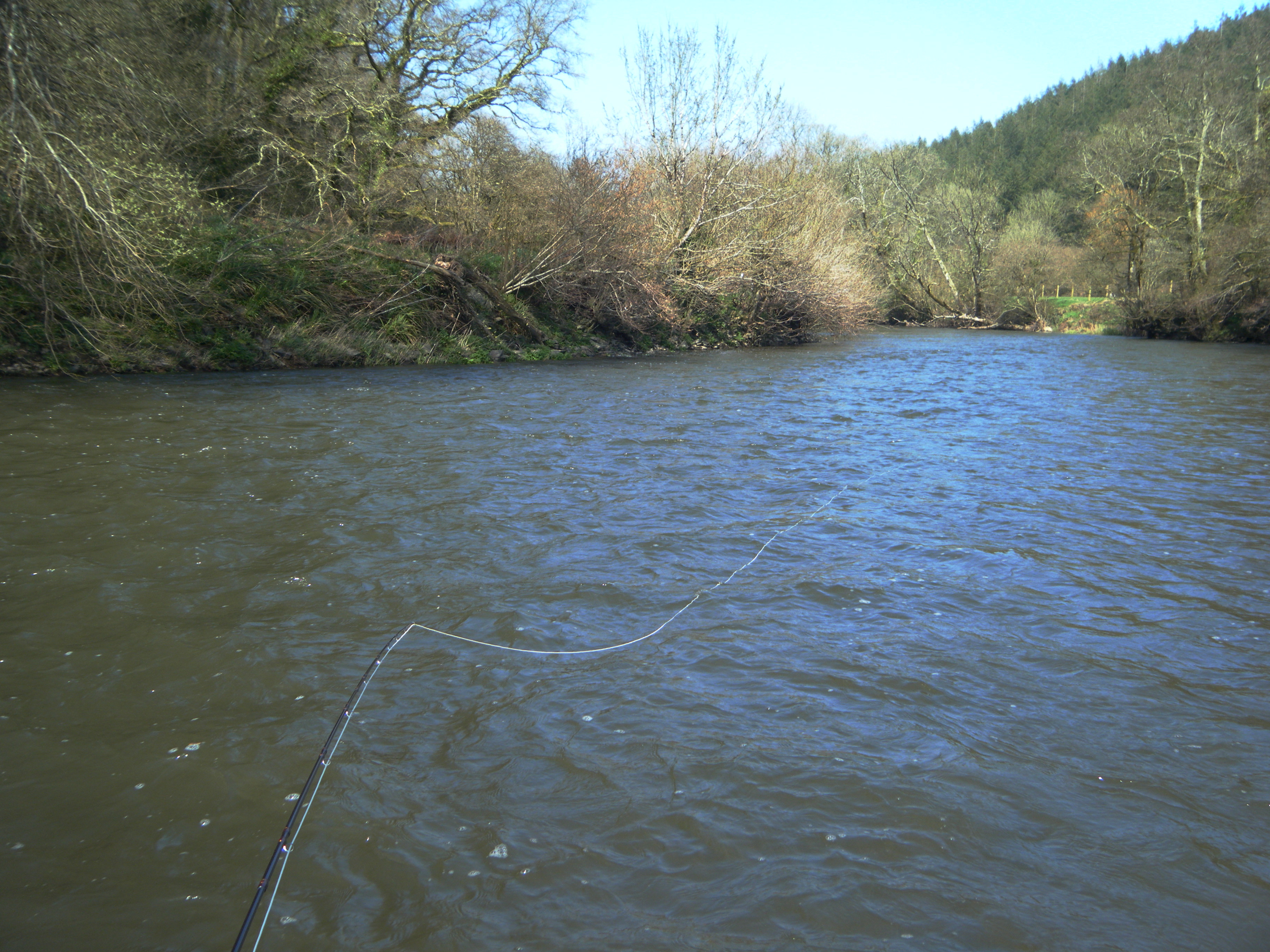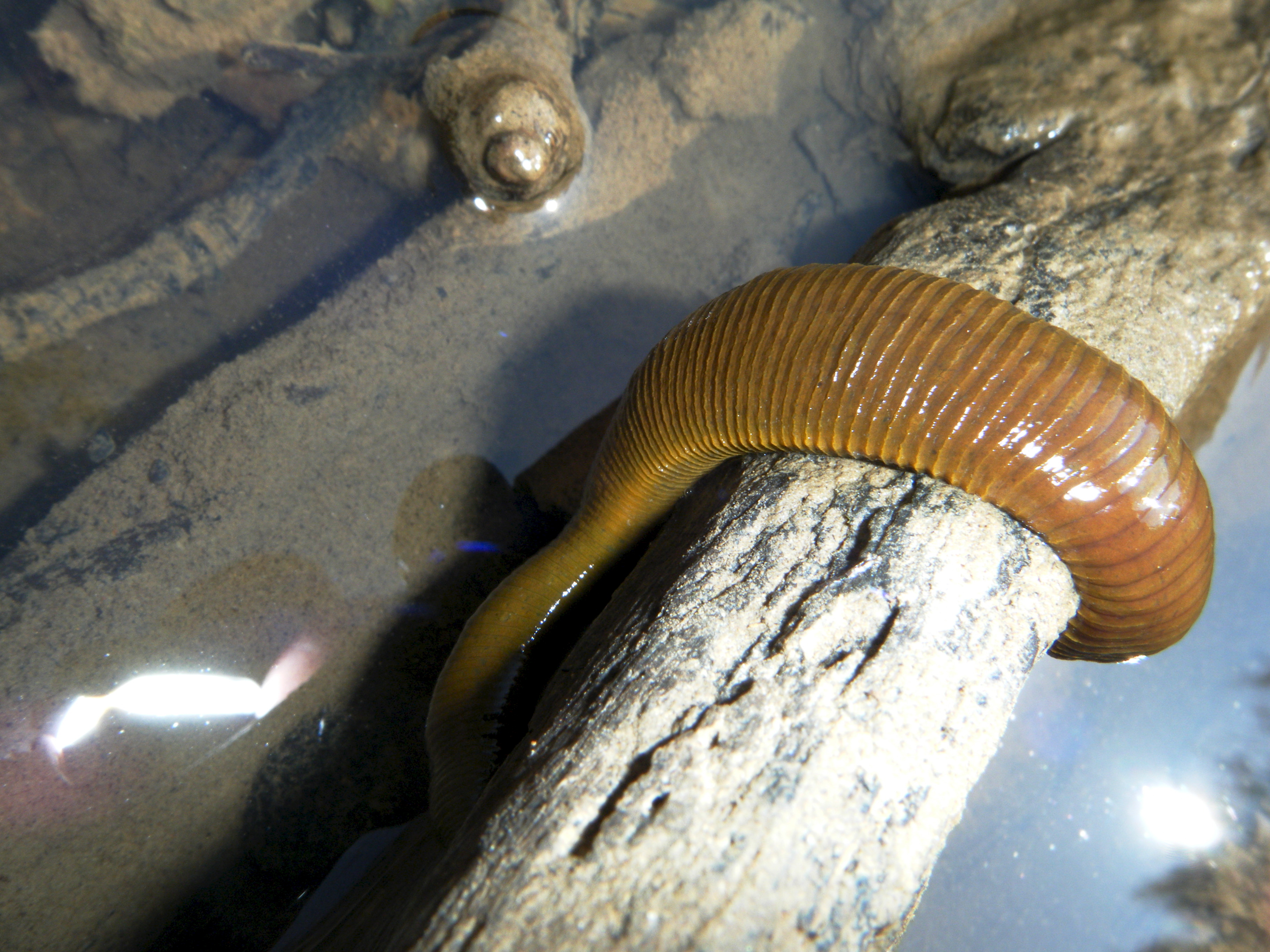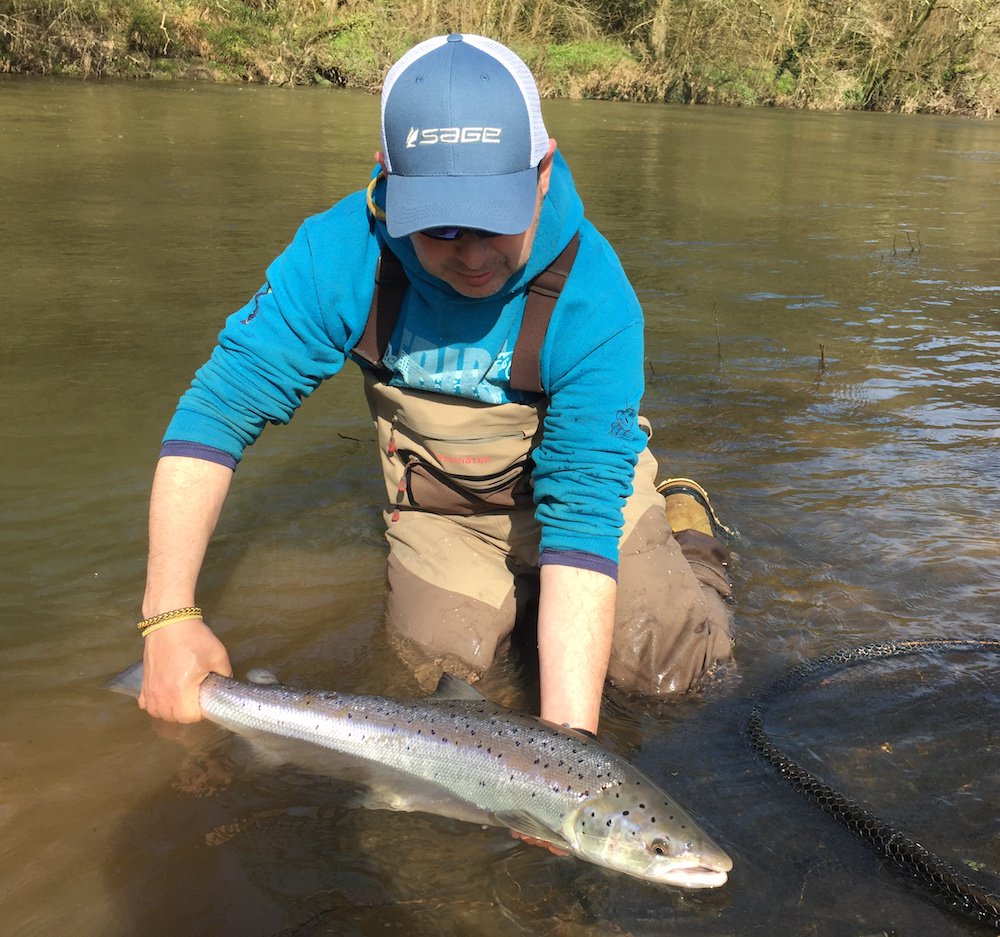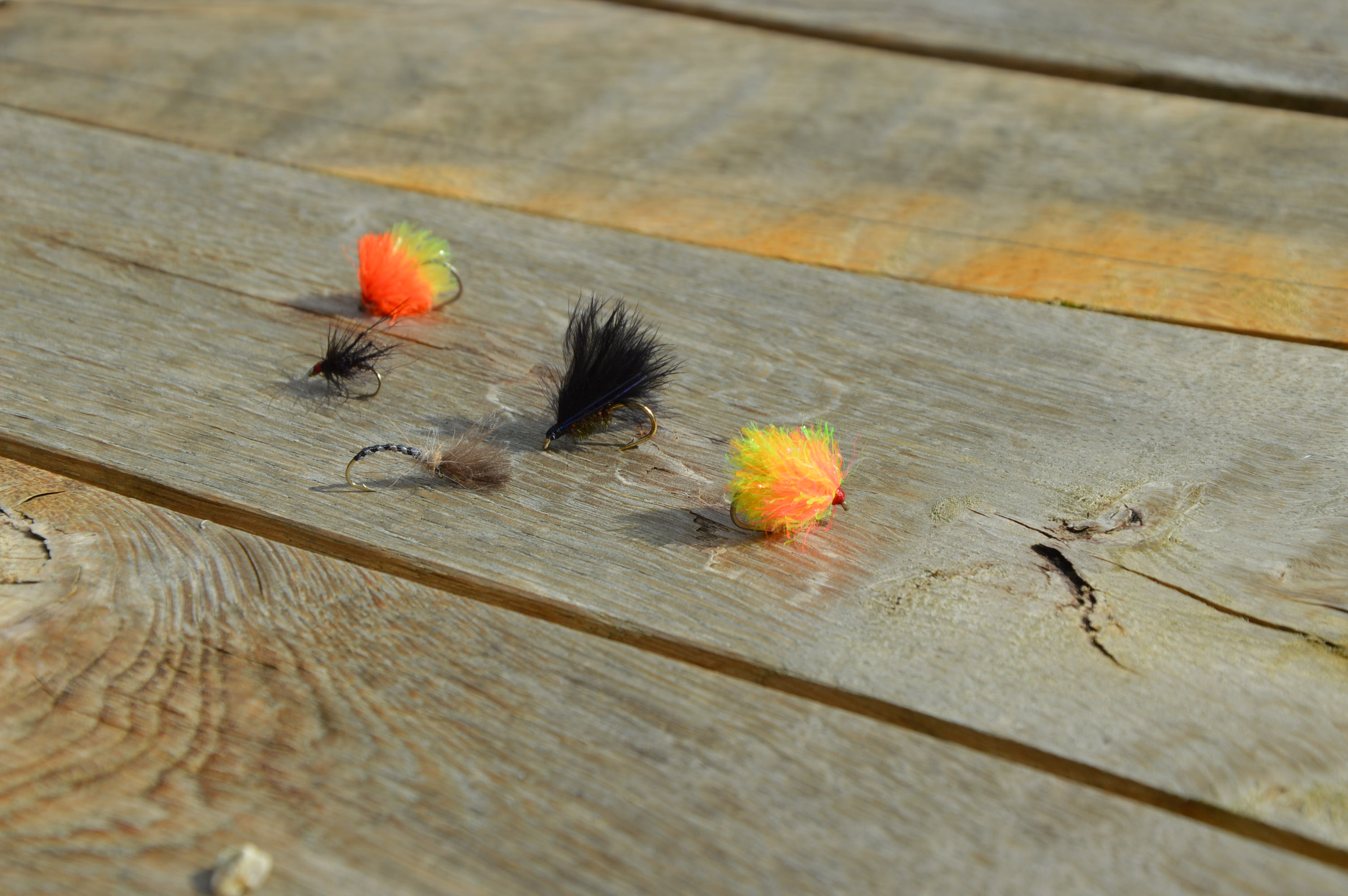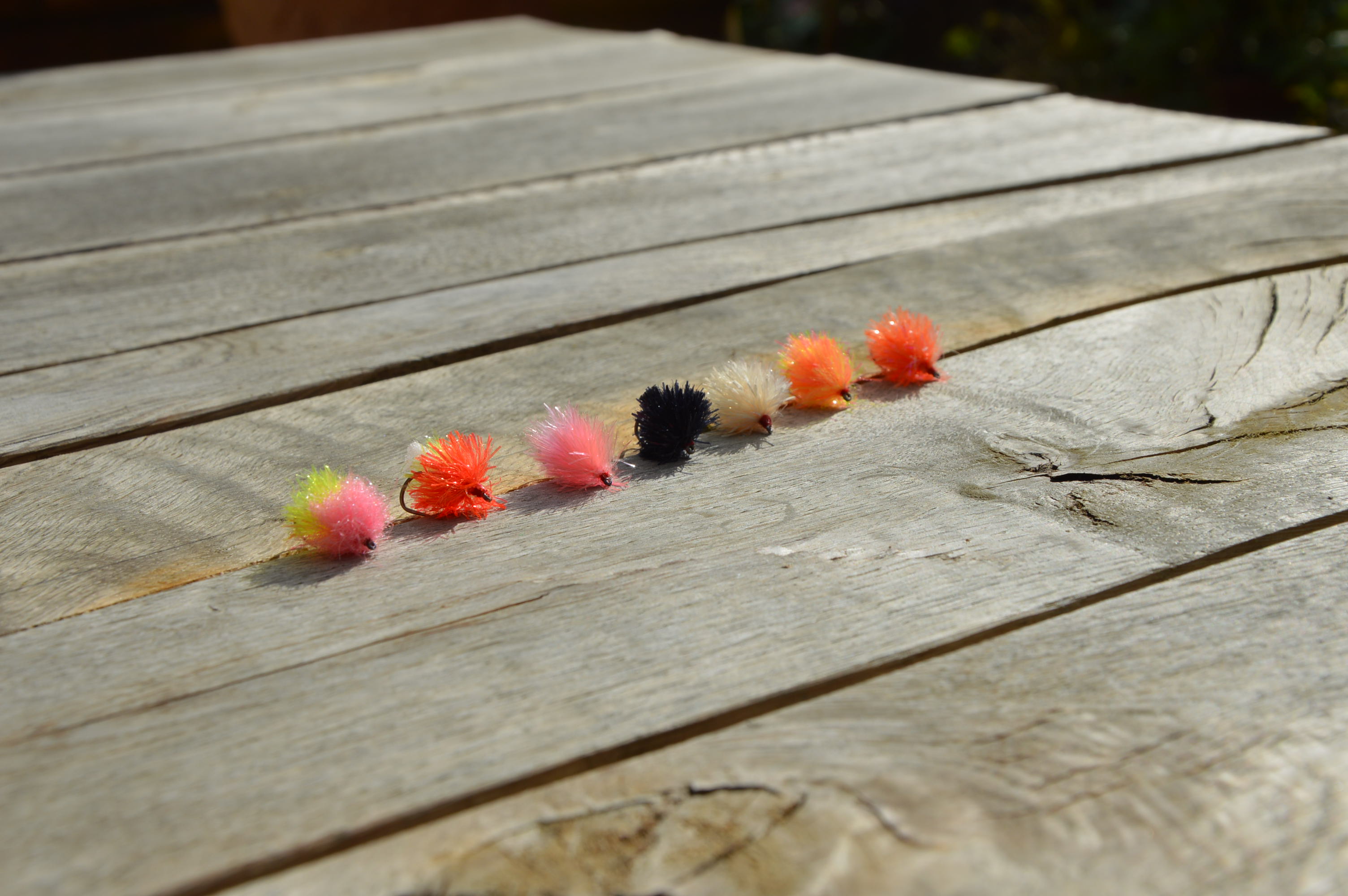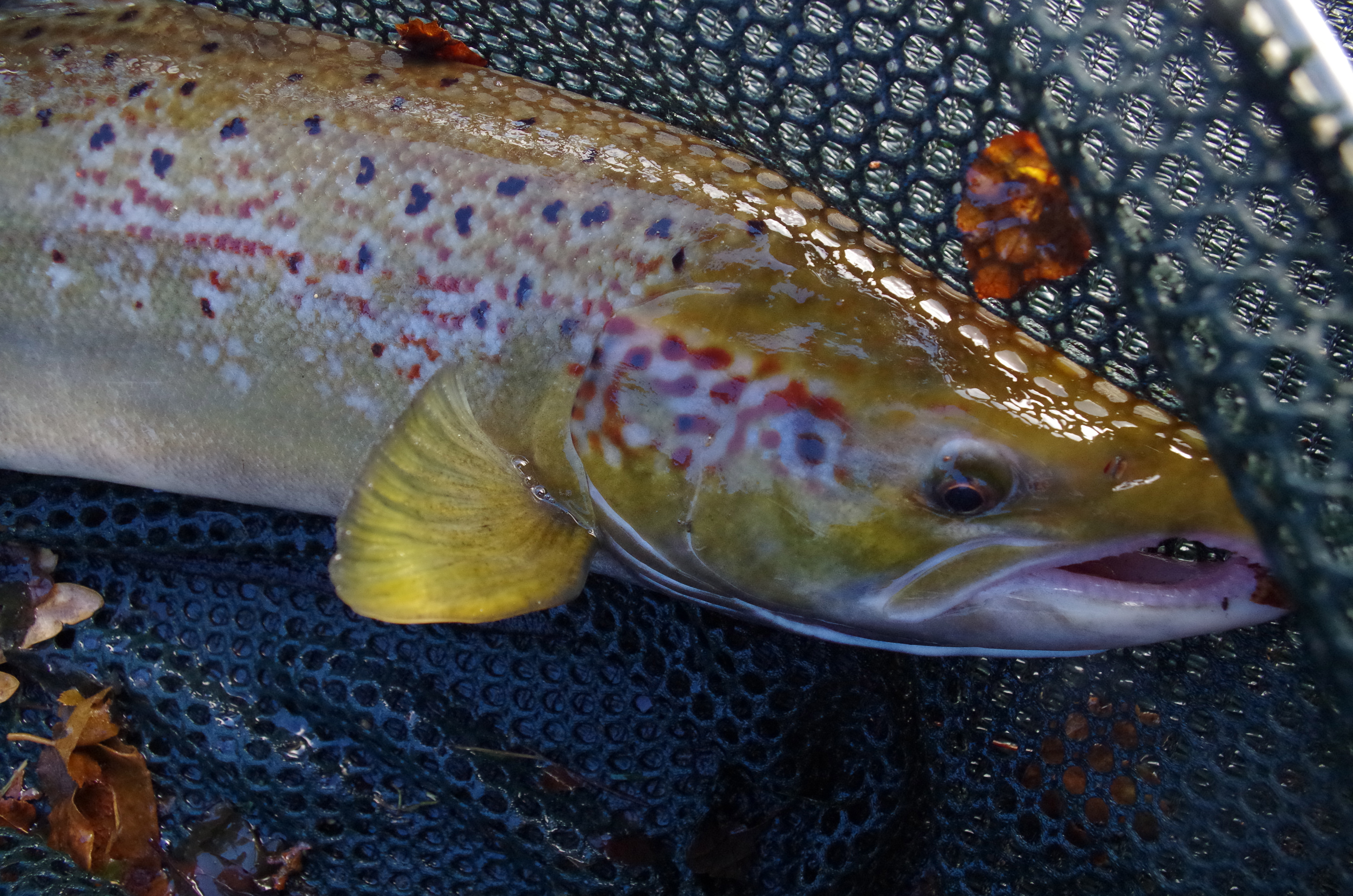Salmon and sea trout anglers have been hoping for rain all summer to bring the local rivers into spate and bring fresh run migratory bars of silver into North Devon’s rivers. The rain that fell on Sunday whilst welcome was not enough to bring a substantial rise despite washing a great deal of sediment into the rivers. The Taw and Torridge both came up and ran dirty but have dropped back quickly. It is to be hoped that a few fish have been encouraged to move up river. A few anglers have cast a fly on the Taw and experienced rod John Kenyon fished the Weir Marsh and Brightly Beats of the Taw to tempt a fine fresh run salmon of 15lb using a Willie Gunn micro tube.
A few sea trout have been reported from the Torridge but no reports of salmon to my knowledge.
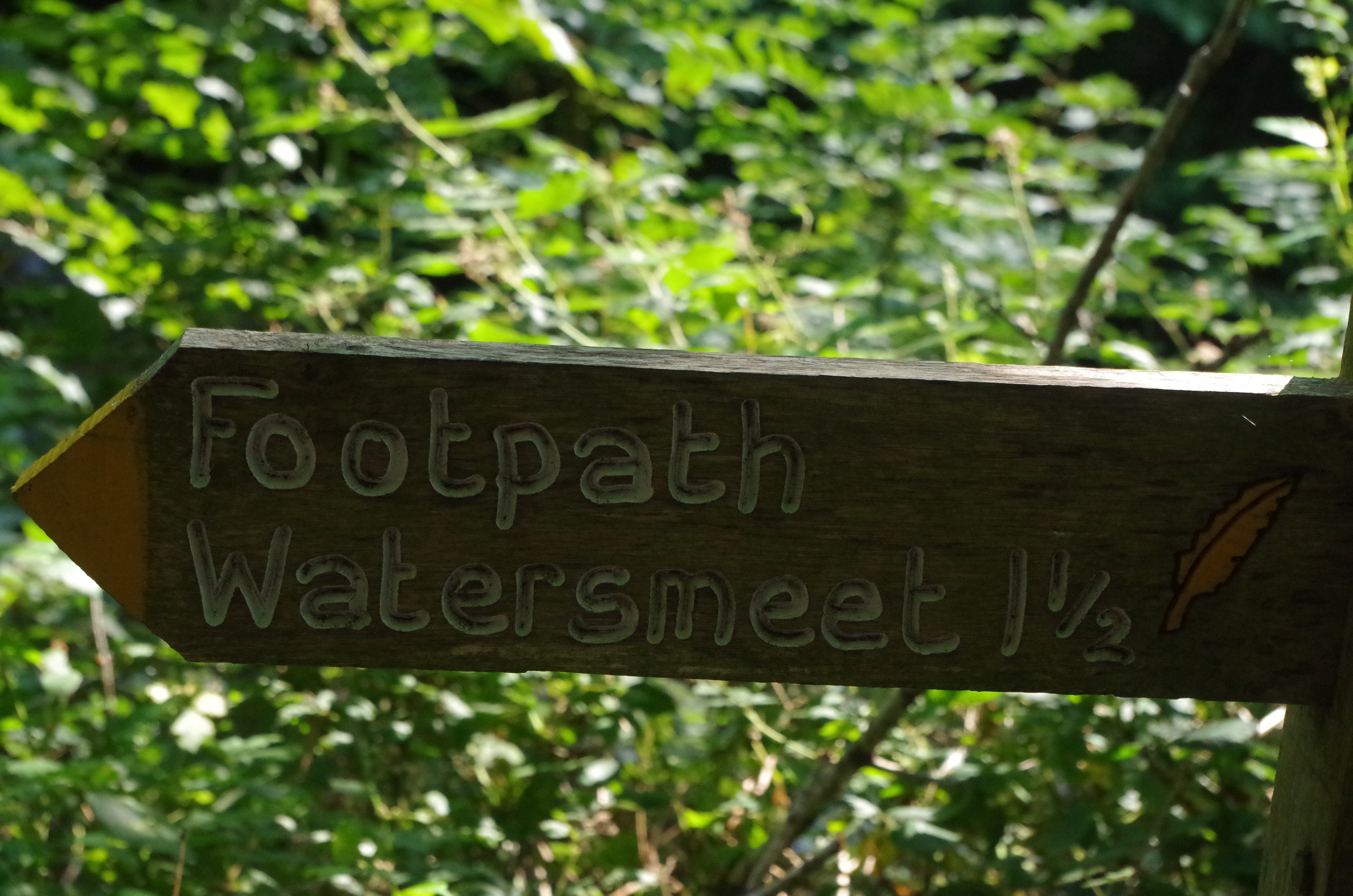
One of my favourite local rivers is the East Lyn that tumbles to the sea from Exmoor through the Watersmeet Estate. The riverside walk has been made even more popular following the TV appearance of Julia Bradbury in a program that showcased the beautiful wooded valley. I have many fond memories of the River Lyn and walking its rocky banks brings mixed feelings. The Lyn was undoubtedly an amazing salmon and sea trout fishery that offered splendid fishing at a low cost. I fished the river extensively over a twenty year period and landed a good number of salmon and sea trout. When I first fished the river back in the eighties individual local anglers often caught in excess of fifty salmon in a season. I never approached those figures but often walked away from the river with a brace of salmon caught on worm or spinner. Back then following a spate the river would be lined by anglers who traveled from far and wide to enjoy the short window of opportunity that followed each spate . When the river flowed with a colour of a fine ale salmon would seize the anglers Mepps spinner with gusto fighting the rod and line in a flurry of spray in the confines of the boulder strewn water course. As the water cleared the worm reigned supreme as anglers stalked individual salmon. Spotting the salmon is of course an art in itself with a keen eye required to locate the salmon in the turbulent flow. Experience built up over many seasons helped greatly for the salmon would frequent the same lies year on year enabling the anglers to target the right spots.

Pauline and I walked the river on August Bank Holiday following a day of heavy rain the water looked perfect as it tumbled towards the sea. Surely a Mepp’s flicked across the pools would bring a silver reward? But time has passed by and we saw no anglers searching the water. There was once a thriving community of anglers who fished this river who would meet up each season to share stories of past seasons and other waters. There was a darker side to fishing on the Lyn with snatching of fish endemic before the fishery bailiffs stamped their authority.

There are of course a few salmon still running the river and the occasional angler practicing catch and release. As we walked the river we came upon EA Fishery Officer Paul Carter who was hoping to glimpse a salmon as he walked the banks ensuring that any anglers fishing had their rod licence. Paul also has a vast array of memories of North Devon’s rivers and many characters who have trodden the fishermans paths. Today Paul has the latest technology to help record any hostile reaction from poacher or unlicensed fisher. Sadly the precious salmon stocks have dwindled and it is so important the present stocks are protected. Ironically the anglers who chased those silver bars for many years are those that care most for the future of the iconic fish.
We did see two fishers on our walk, a trout fisher and a heron. Long may there be fishers on the Lyn for a river without fish or fishers is somehow rather empty.
